You insert your external hard drive into your computer, trying to transfer something important, and BOOM! Your external hard drive is not showing up on computer. This is kind of frustrating.
But don’t worry. This is one of the common computer issues and you can fix the external hard drives not showing up issue quickly and easily.
Why is my hard drive not showing up? The reasons can be various, but the common causes are your computer fails to detect your hard drive. So you need to check the connection, and the software problem that are likely to cause the issue.
What to do if my computer is not recognizing external hard drives
- Troubleshoot the issue
- Make sure the drive is enabled
- Update disk drivers
- Partition the drive
- Change the drive letter
Fix 1: Troubleshoot the issue
If your hard drive is not showing up in your computer, you should, in the first place, troubleshoot the issue and see where the problem lies in.
You can try to insert your external hard drive into another USB port to see if the issue can be caused by the USB ports problem. If your computer recognizes your drive when plugging into another USB port, then you’ve found and fixed your issue.
If your external hard drive is still not recognized by your computer, try to install your drive into another computer, and see if it shows up on that computer. If the drive is not showing up on that computer too, it should be your hard drive problem, switch to another hard drive or consult your manufacturer. If it shows up on that computer, it may be your computer problem, and you can try the following solutions to fix the hard drive not showing up issue.
Fix 2: Make sure the drive is enabled
If the hard drive is disabled in your computer, you’ll not see the hard drive in your computer and fail to transfer using your drive. So you should make sure that your drive is enabled in your computer. Here’s how to check:

1) On your keyboard, press the Windows logo keyand R at the same time.
2) Type devmgmt.msc and click OK.
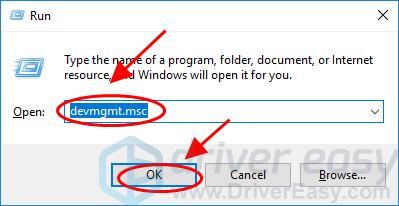
3) In Device Manager, double click the category that your external hard drive belongs to (it’s usually Disk drives or Universal Serial Bus controllers).

4) Double click your external hard drive to go to the Properties pane.
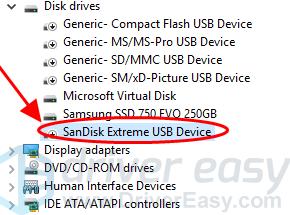
5) Click Enable Device to enable your hard drive.
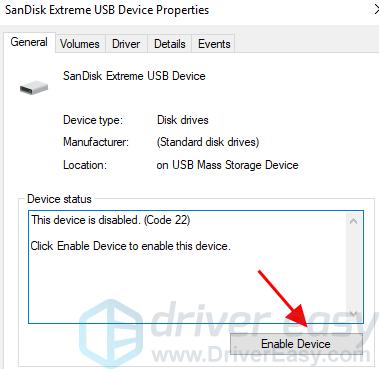

Kindly note that if you see Disable device on the tab, your drive is enabled already. Usually when you see this icon next to your device name, that means your device is disabled.
Fix 3: Update disk drivers
The missing or outdated device drivers for your hard drives can also result in hard drives not showing up on computer. You should verify that the drivers of the hard drives are up to date.
There are two ways to update your disk drivers: manually and automatically.
You can manually search for the latest version of your drivers, then download and install it in your computer. This requires time and computer skills.
If you don’t have time or patience, you can do it automatically with Driver Easy.
Driver Easy will automatically recognize your system and find the correct drivers for it.You don’t need to know exactly what system your computer is running, you don’t need to risk downloading and installing the wrong driver, and you don’t need to worry about making mistake when installing.
You can update your drivers automatically with either the FREE or the Pro version of Driver Easy. But with the Pro version, it takes just 2 clicks (and you will get full support and a 30-day money back guarantee).
1) Download and install Driver Easy.
2) Run Driver Easy and click the Scan Now button. Driver Easy will then scan your computer and detect any problem drivers.
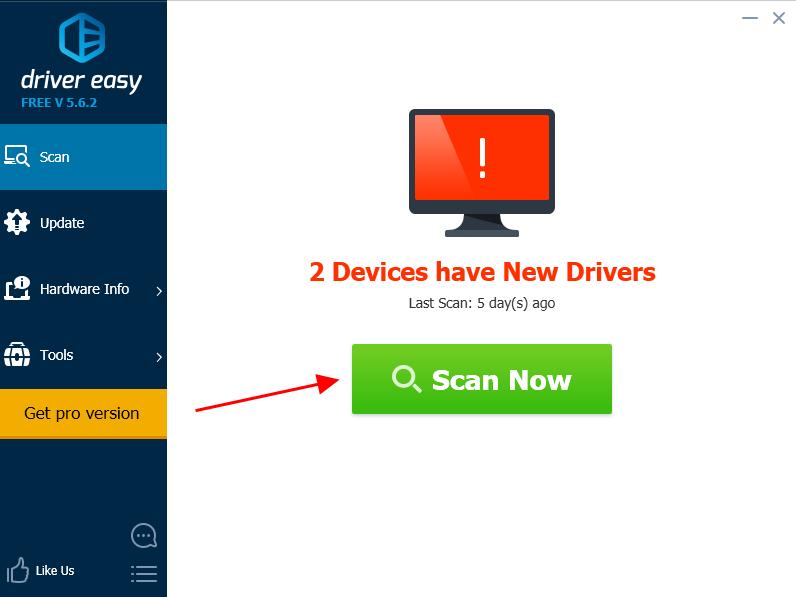
3) Click the Update button next to the flagged device to automatically download the correct version of the driver (you can do this with the FREE version), then install the driver in your computer.
Or click Update All to automatically download and install the correct version of all the drivers that are missing or out of date on your system (this requires the Pro version – you’ll be prompted to upgrade when you click Update All).
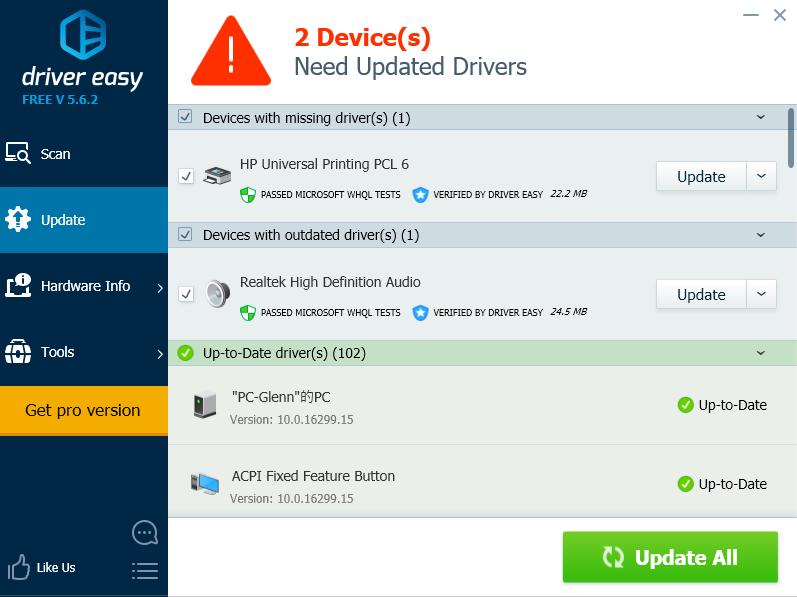
4) Restart your computer to take effect.
Check if your external hard drives show up in your computer.
Fix 4: Partition the drive
This drive can be caused by the partition issues if your hard drive is not showing up, especially when it’s the first time that you connect your hard drive to your computer. So you should check and partition the drive to fix it. To do so, follow the steps below:

1) On your keyboard, press the Windows logo key and R at the same time.
2) Type diskmgmt.msc and click OK.
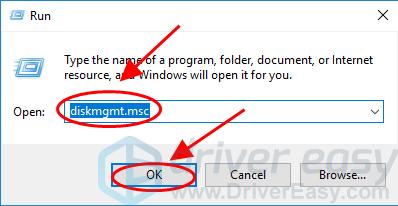
3) In Disk Management, if you see your drive is unpartitioned or unallocated, right click on the hard drive, and select New Simple Volume.
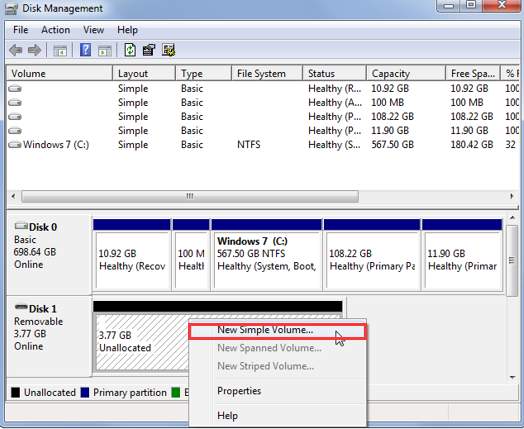
4) Follow the on-screen instructions to finish partitioning the drive.
5) Restart your computer to see if detects your external hard drive.
Fix 5: Change the drive letter
If your drive is partitioned and you still can’t see it, ensure you’ve set a drive letter so you can access it in Windows. To do so:

1) On your keyboard, press the Windows logo key and R at the same time.
2) Type diskmgmt.msc and click OK.
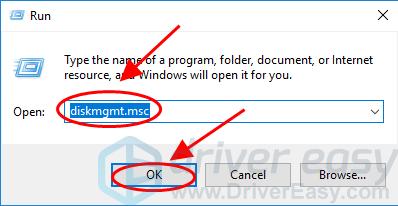
3) In Disk Management, right click on your hard drive and select Change Drive Letter and Paths.
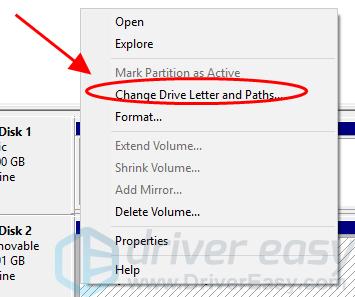
4) Click Add if your hard drive doesn’t have a drive letter, or click Change if your drive has a drive letter already.
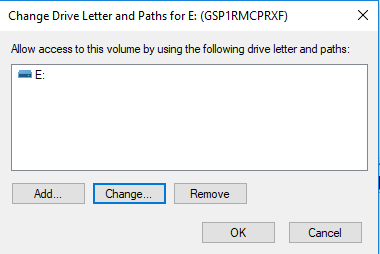
5) Make sure to select Assign the following drive letter, then select a drive letter you want, and click OK.
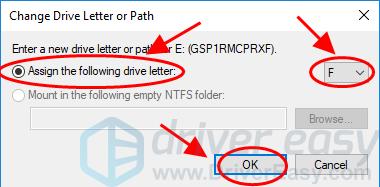
Then re-insert your external hard drive to see if it’s showing up.
That’s it. Hope this post serves its purpose and helps in resolving the external hard drive not showing up issue in your computer.





